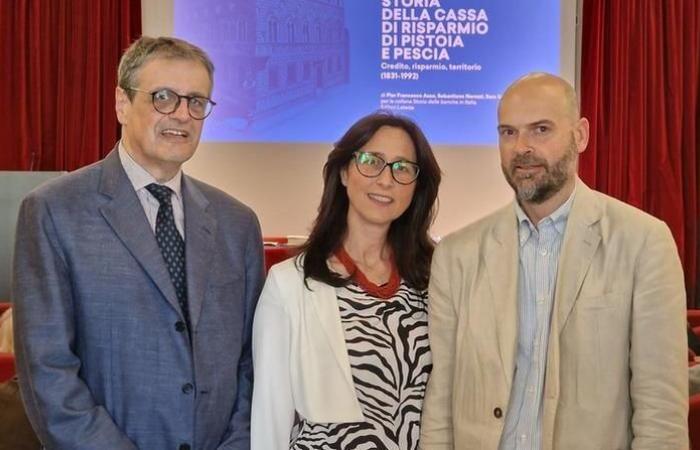The Cassa di Risparmio di Pistoia e Pescia has not only shaped the history of the city, but has also reflected its identity, that of a cultured and enterprising city, attentive to savings and development, but also to what today would be called social sustainability. This reflection of the city in its bank emerged clearly in the presentation of the volume “History of the Cassa di Risparmio di Pistoia e Pescia, credit, savings, territory (1831-1992)” by Pier Francesco Asso, Sebastiano Nerozzi and Sara Selmi, published by Laterza and promoted by the Fondazione Cassa di Risparmio di Pistoia e Pescia.
“It is a research desired and conceived by Luca Iozzelli – said the outgoing president of the Caript Foundation, Lorenzo Zogheri – which occupied the entire four-year period, it was a duty, a way for the Foundation to pay off a debt with the Cassa di Risparmio in which it has its roots and with which it has a very close relationship, not only economic”. In the institutional greetings, note the recognition of the prefect Licia Donatella Messina who defined the Cassa “a leading player in provincial development” and also of the bishop Fausto Tardelli who in his message stated that the Cassa di Risparmio “has carried out a commendable and far-sighted service” and defined the Caript Foundation “a jewel in the crown of the city”.
The role of the Foundation in its relationship with the bank was also underlined by the representative of Banca Intesa, Claudio Bartolini. The presentation of the book was entrusted to the economic historian Giuseppe Conti and to the researcher Andrea Ottanelli whose essential contribution to the publication of the volume was underlined at the beginning by president Zogheri. Giuseppe Conti underlined the role of savings banks at the beginning of industrialization and their peculiarity, also present in the Pistoia bank, of “standing with one foot in the market and with the body outside the market”, a characteristic which in the most turbulent moments of the economic situation represented a strong point.
Andrea Ottanelli has outlined a summary of the history exposed in the volume, focusing on some key moments starting from the birth of the Cassa di Risparmio di Pistoia in 1932 in a city of ten thousand inhabitants on the initiative of some local leaders including Niccolò Puccini with a manifesto signed by 191 citizens. After six months of existence, the Cassa publishes a statement of its operations, a singular proof of transparency. Born as an affiliate of the Cassa di Risparmio di Firenze, that of Pistoia broke away from it in 1883 in the final part of the 19th century in which some industrial nuclei were born in Pistoia and the bourgeois class that was previously missing gradually began to take shape. Since its origins, the Cassa has stood out for its attention to the territory and to social and cultural purposes. And now the Foundation has taken up the baton of that vocation.
Giacomo Bini






